- Home
- Stephen Hunter
G-Man
G-Man Read online
ALSO BY STEPHEN HUNTER
Point of Impact
Black Light
Time to Hunt
The 47th Samurai
Night of Thunder
I, Sniper
Dead Zero
The Third Bullet
Sniper’s Honor
Hot Springs
Pale Horse Coming
Havana
Dead Zero
Soft Target
The Master Sniper
The Second Saladin
Tapestry of Spies
The Day Before Midnight
Dirty White Boys
I, Ripper
An imprint of Penguin Random House LLC
375 Hudson Street
New York, New York 10014
Copyright © 2017 by Stephen Hunter
Penguin supports copyright. Copyright fuels creativity, encourages diverse voices, promotes free speech, and creates a vibrant culture. Thank you for buying an authorized edition of this book and for complying with copyright laws by not reproducing, scanning, or distributing any part of it in any form without permission. You are supporting writers and allowing Penguin to continue to publish books for every reader.
Blue Rider Press is a registered trademark and its colophon is a trademark of Penguin Random House LLC.
Library of Congress Cataloging-in-Publication Data
Names: Hunter, Stephen, 1946- author.
Title: G-man : a Bob Lee Swagger novel / Stephen Hunter.
Description: New York : Blue Rider Press, [2017] | Series: Bob Lee Swagger
Identifiers: LCCN 2016050117 (print) | LCCN 2016058089 (ebook) | ISBN 9780399574603 (hardcover) | ISBN 9780399574627 (ebook)
Subjects: LCSH: Swagger, Bob Lee (Fictitious character)—Fiction. | Family secrets—Fiction. | Snipers—Fiction. | BISAC: FICTION / Suspense. | FICTION / Thrillers. | FICTION / Mystery & Detective / Traditional British. | GSAFD: Suspense fiction.
Classification: LCC PS3558.U494 G23 2017 (print) | LCC PS3558.U494 (ebook) | DDC 813/.54—dc23
LC record available at https://lccn.loc.gov/2016050117
This is a work of fiction. Names, characters, places, and incidents either are the product of the author’s imagination or are used fictitiously, and any resemblance to actual persons, living or dead, businesses, companies, events, or locales is entirely coincidental.
Version_1
CONTENTS
Also by Stephen Hunter
Title Page
Copyright
Epigraph
Dedication
Prelude
Part I Chapter 1
Chapter 2
Chapter 3
Chapter 4
Chapter 5
Chapter 6
Part II Chapter 7
Chapter 8
Chapter 9
Chapter 10
Chapter 11
Chapter 12
Chapter 13
Chapter 14
Chapter 15
Chapter 16
Chapter 17
Chapter 18
Chapter 19
Chapter 20
Chapter 21
Chapter 22
Chapter 23
Chapter 24
Part III Chapter 25
Chapter 26
Chapter 27
Chapter 28
Chapter 29
Chapter 30
Chapter 31
Chapter 32
Chapter 33
Chapter 34
Chapter 35
Chapter 36
Chapter 37
Chapter 38
Chapter 39
Chapter 40
Chapter 41
Part IV Chapter 42
Chapter 43
Chapter 44
Chapter 45
Chapter 46
Chapter 47
Chapter 48
Chapter 49
Chapter 50
Chapter 51
Chapter 52
Chapter 53
Chapter 54
Chapter 55
Chapter 56
Part V Chapter 57
Chapter 58
Chapter 59
Chapter 60
Chapter 61
Chapter 62
Chapter 63
Chapter 64
Chapter 65
Chapter 66
Chapter 67
Chapter 68
Chapter 69
Chapter 70
Chapter 71
Acknowledgments
About the Author
Thus speaketh the red judge: “Why did this criminal commit murder?
He meant to rob.” I tell you, however,
that his soul wanted blood, not booty:
he thirsted for the happiness of the knife!
—Nietzsche, Thus Spake Zarathustra
Baby face
You’ve got the cutest little baby face
There’s not another one could take your place
You baby face
—Popular song by Harry Akst and Benny Davis, 1926
For the late John Carroll
Great newspaperman, great guy
PRELUDE
EAST OF BLUE EYE, ARKANSAS
The present
THE BLADES OF THE GRADERS contoured the land to spec. They rounded hills, felled and flattened woods, scoured underbrush, crushed rocks, filled hollows, collapsed ravines. Nothing but raw earth remained. What had been complex became plain, according to the latest large-project construction principles. Streets had been staked out, while sewers and wiring and cable were planted in furrows. Then the houses would spring up, rows of them, all alike, but soon to be differentiated by their new owners. It was progress—or, at least, development—it was growth, it was capitalism, it was hope. It couldn’t be stopped, so mourning was pointless.
This land had sustained one family for more than two centuries, first claimed in the late 1780s by a quiet couple from over the mountains, where the war was just finishing. They gave no account of themselves. They and theirs stayed for seven generations, and for that whole time they were steady, solid; they went to church, they gave to charity, they did their share in emergency or crisis. But more, it turned out they were a family of heroes. Their boys learned to shoot; they learned the hunter’s patience, his stoicism, his courage, his mercy, his honor. They had a gift for the firearm, and more than a few of them took that gift off to war. Some made it back, some didn’t. Some became officers of the law, for in those days that too called for the shooter’s talent. They shot for blood many a time, and, again, some made it back and some didn’t.
They were all gone now. The last of them had sold off the place for a substantial amount and fled, not wanting to see what was done to his homestead and the homestead of his ancestors.
Now the contouring was all but finished. Only the old house remained, atop a hillock that dominated the spread, a comfortable, rambling joint that had been added to over the decades until it practically made no sense at all. The hill was too much for the graders and so the company brought in a big Cat excavator, the 326F L model, a machine classified medium by weight, and set it loose, under the guidance of a professional genius named Ralph.
From afar, it looked like some kind of Jurassic ritual. A yellow Tyrannosaurus rex had downed a Bronto or a Stegosa
urus and now fed on soft underbelly. The knuckle boom of Ralph’s big Cat pierced and ripped and tore, its bucket armed with side cutters and teeth, taking down walls and floors swiftly, in a single day reducing what had been a large house to a large pile of rubble. The next day, using the bucket as an artist would a brush, Ralph cleared the shattered remnants of two centuries’ worth of history, loading them into the trucks, which hauled them off to the landfill. Finally, on the third day, only the foundation remained, and he directed the bucket to continue its feast of destruction, smashing the stones into smaller chunks, then scooping them up for disposal. It was all going according to plan—until it wasn’t.
The managers saw him stop, pop the big machine out of gear, turn off its hydraulics, then leap from the yellow house, dash along the tread and swing down off the boom, pass under the knuckle, and reach the bucket, which was frozen in place on a particularly large chunk of foundation that would not shatter according to plan.
They approached and swiftly became an inspection committee.
“Something wrong, Ralph?”
“You didn’t bust a pump or lose a piston?”
“Did you spring a hydraulic leak there, Ralph?”
Of course all this really meant but one thing: how much is this going to cost us?
But Ralph was on his knees, studying on the joinery between the bucket’s teeth—those hard T. rex fangs—and earth.
“I felt something,” he said. “You know, you get so you can read the vibrations. It wasn’t stone, dirt, pipe—nothing like that.”
He poked, prodded, messed around with a spade.
“What’d it feel like?” he was asked.
“Some kind of metal. I don’t know, a sheet or a—”
He stopped, spotting something, leapt forward, examined more closely, inserted the shovel’s blade, dug, pried, cleared, sought leverage, and finally, with a spray of dirt like an explosion, exposed something from the Great Beneath.
“Jesus,” he said, now pulling the treasure free, “it’s a strongbox of some kind.”
It was, looking like the sort of thing carried by Wells Fargo and subject to larceny by men in dusters and hats, with bandannas across their faces and Winchesters in their hands.
The committee gathered around. Curiosity now overcame their need, if only for a bit, to stay on schedule.
“Maybe it’s full of gold,” somebody remarked.
Ralph, whose genius was practical, not speculative, smacked at the padlock a few times with his spade, expertly driving the corner tip of its blade under the locking hasp, and the hasp’s old metal couldn’t bear the spike in pressure and broke open on the third blow.
The committee gathered closer as he tossed the busted lock away and pulled the lid back on the strongbox’s rusted hinges.
The contents were initially disappointing. A number of objects wrapped tightly in heavy canvas, loosely secured by disintegrating tape, their outlines muffled by the heavy swaddling. Ralph popped a Kershaw knife from the pocket of his jeans, where it had been clipped, cut the tape, and used the point of the blade to push through the mass of canvas. It gave way to an oily cloth wrapping, under which the thing, shed of its canvas raiments, assumed a familiar shape. At last, he got this final oily wrapping away from it and held it out, gleaming in the sun, for all to see.
“It’s a damned pistol,” he proclaimed.
“It’s an old .45 automatic,” someone who knew said.
“Old?” someone else said. “Hell, it looks brand-new!”
They were otherwise stunned into silence. Finally someone said, “Man, I bet that bad boy has a story to tell.”
Part I
1
ARCADIA, LOUISIANA
May 23, 1934
WASN’T MUCH. Wasn’t a thing, really. Trees, an abundance of them, all green and dense, so thick you couldn’t see the forest for them. And closer in, the road. Gravel, not important enough to wear so important a name as Highway 154. That sounded like, well, civilization, and out here, in the boondocks of the boondocks, wasn’t civilization, just gravel and trees?
Charles anchored the line. Captain Frank put him there because he wanted boys he trusted at key spots. Frank wasn’t the sort to leave much to chance, which is why, fifty-one men later, he was still alive (though he’d been hit seventeen times). So that is why Charles sat in full man-hunting stillness in the bush, twenty feet from the gravel. Next to him, though invisible, was the Dallas policeman Ted Hinton with a big Browning gun, and then some of the Louisiana boys (Charles hadn’t caught their names), then Manny Gault, another trusted friend of the captain’s, another Louisiana fellow, and finally, anchoring the other end, the captain himself. They all sat or crouched, aspiring to different styles of stillness and silence, clearly men on the stalk, though some were born to it and others merely pretending they knew what they were up to. A cough, a slap at a mosquito, a hawked gob of phlegm, a scratched itch, a shuffle, all muted, kept in close, all of them with hats at ears and brims nearly to eyes, after what most guessed and some knew was the gunman’s style.
You’d have thought this posse was off on a raid in the Great War, so heavily armed it was, and Charles should know, having led many a raid in the Great War. Then, as now, he had a .45 Government Model in a shoulder holster, but not as then a Model 97 short-barreled Winchester riot gun leaning next to the tree and another of Mr. Browning’s fine creations, a semi-auto Model 8 in .35 caliber, in his hands. It held five big rounds and could be fired quick, as the trigger went back on it, a skill that took some practice, though with Charles’s gift for the firearm, not as much practice as with some others.
But Charles would have been fearsome without the hardware. He was a tall man, seemingly assembled from blades. He was forty-three, had a hard, long, angular blade of a body, a blade of a nose, two cheekbones that looked as if they could cut steel, and was long everywhere else, arms, fingers, legs, even toes. If you could meet his eyes—few could—they were black anthracite, and when they fixed and narrowed on something, that something was about to get a hole in it. Though it would be another hot, airless, dusty Louisiana day—a July day by Arkansas standards, an August day by Chicago or Washington standards—he wore a three-piece suit of thick gray wool herringbone, a black tie cinched tight, as it always was, a sheriff’s star on his lapel, and a pair of brown high-top boots. A brown felt fedora was pulled low on his face, as if to shield the world from the force of his eyes. He looked like a funeral director, which was close, as he was really a funeral provider.
“See anything there, Sheriff?” came a softly phrased question through the bush. Hinton, who couldn’t stay true to manhunt discipline and had squirmed and chattered the last few hours as if he were on the beach or at the bar.
“Not a goddamned thing,” said Charles.
Another of Charles’s freakish attributes was his vision, held by all to be unusually sharp. It was perhaps the key to his shooting, and it was another reason the captain wanted him farthest out. His job wasn’t merely to shoot well but to see well; the captain counted on him to catch a whisper of dust from a long distance to announce that a car was coming, about to crest a low hill, under the guidance of a fast and skillful driver, which would mean the commencement of the day’s work and the conclusion of a long and grueling ordeal.
Charles scanned for dust again, saw no disturbance in the atmosphere, and wondered if this one was going to go south like all the other ambushes. This pair of peckerwoods was hard to figure because they were such creatures of childish whimsy, going here and there as the mood took them. It was like hunting not sparrows but a particular pair of sparrows, trying to guess where they’d be when the sparrow brain was not advanced enough to encompass any notion of the future.
“Maybe we ought to pull tail. Could use me a nice iced tea. My mouth’s full of dust ’n’ grit.”
“You just hold still,” said Charles.
“The captain gives the orders and we sit until he tells us we don’t sit no more.”
He scanned again. Trees, trees, trees. Across the gravel road, an old truck and an old man. But it was all ambush theater, a decoy to bring in the scrawny sparrows. The truck was on a jack and its tire lay in the middle of the gravel. The old man lounged on the running board. His name was Ivy and he was father to a boy who ran with the pip-squeaks. All this was happening by arrangement with and through him. In exchange for getting his boy Henry off on certain Texas charges, the old man had volunteered to keep the man hunters up on the ramblings of the outlaw pair and to act as tethered goat in the actual ambush if it came.
Charles was an Arkansawyer. He was hero of the Great War in two armies, one Canadian, one American. He was the winner of the famous First National of Blue Eye Gunfight in 1923, when he had killed three city boys with heavy guns who’d wanted to take a small-town bank for liquor money. He was the father of two boys, each one more of a mystery than the other. He was the sheriff of Polk County, Arkansas. He was here in secret at the captain’s request because the captain felt gun time was near and he wanted men with him who’d done the work before and none were better at it than Sheriff Charles F. Swagger.
It was about then, getting on to 9 a.m., he saw it. Just a trace of drift against a far-off green wall of trees, nothing really there, but to his sharp vision, it was bold as a dancing girl.
“Car bearing this way, coming down fast.”
“Yes sir,” said Ted, with a slight tweak to his voice indicating a spurt of emotion, and he heard Ted turn and say, “Coming in. Coming in. Get yourselves ready.”
For just a second it sounded like they were in a factory, not on the edge of the woods. That was because of clicks, clacks, whacks, cranks, and snaps—all gun business. Safeties came off, bolts were released, slides thrown, levers and pump actions jacked to lift .30-30s or twelve-gauge buck into chambers. There was probably also, if you listened close enough, the low hiss of breath, sucked hard into lungs for the enriching force of the oxygen, being now expelled as each man, seeing action on the come, tried to breathe his way toward control of the yips that coursed through hands and arms and the fear that suddenly lubricated each thought and breath. Lots of guns would be fired, lots of lead in the air, and no one could predict with any certainty what would happen yet.

 Point of Impact
Point of Impact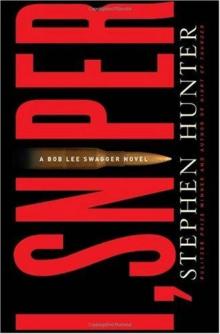 I, Sniper
I, Sniper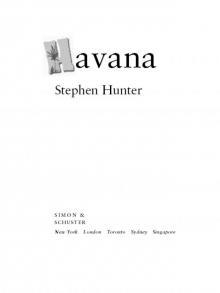 Havana
Havana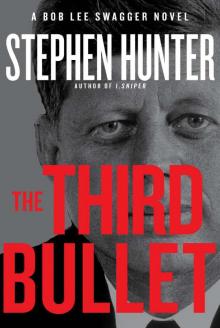 The Third Bullet
The Third Bullet Sniper's Honor: A Bob Lee Swagger Novel
Sniper's Honor: A Bob Lee Swagger Novel Dirty White Boys
Dirty White Boys The 47th Samurai
The 47th Samurai Hot Springs
Hot Springs G-Man
G-Man Black Light
Black Light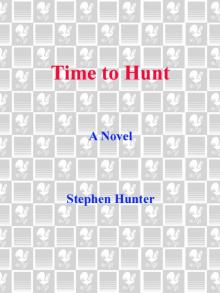 Time to Hunt
Time to Hunt The Day Before Midnight
The Day Before Midnight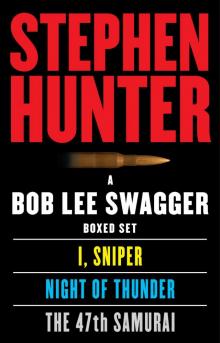 A Bob Lee Swagger Boxed Set
A Bob Lee Swagger Boxed Set The Master Sniper
The Master Sniper Game of Snipers
Game of Snipers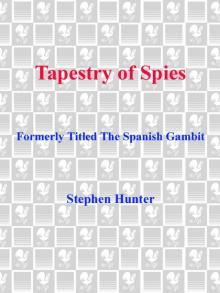 Tapestry of Spies
Tapestry of Spies Citadel
Citadel The Second Saladin
The Second Saladin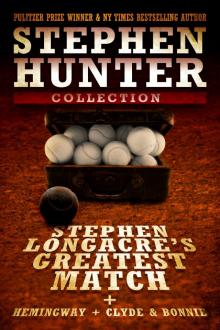 Stephen Longacre's Greatest Match
Stephen Longacre's Greatest Match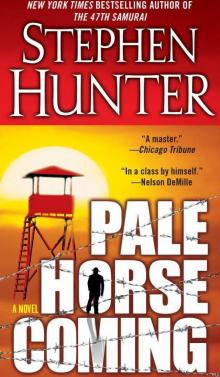 Pale Horse Coming
Pale Horse Coming Soft Target
Soft Target Dead Zero
Dead Zero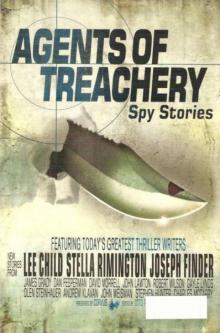 Casey at the Bat
Casey at the Bat The Third Bullet bls-8
The Third Bullet bls-8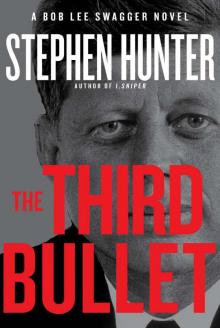 The Third Bullet: A Bob Lee Swagger Novel
The Third Bullet: A Bob Lee Swagger Novel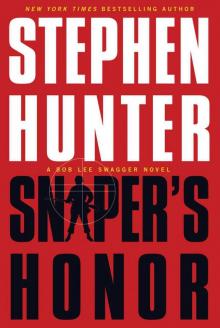 Sniper's Honor
Sniper's Honor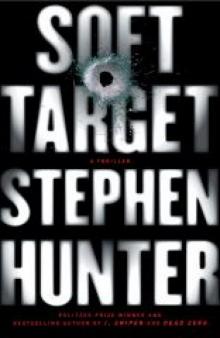 Soft target rc-1
Soft target rc-1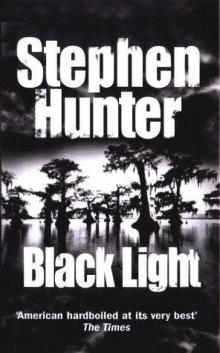 Black Light bls-2
Black Light bls-2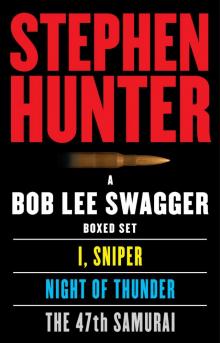 A Bob Lee Swagger eBook Boxed Set: I, Sniper, Night of Thunder, 47th Samurai
A Bob Lee Swagger eBook Boxed Set: I, Sniper, Night of Thunder, 47th Samurai Havana es-3
Havana es-3 Hot Springs (Earl Swagger)
Hot Springs (Earl Swagger)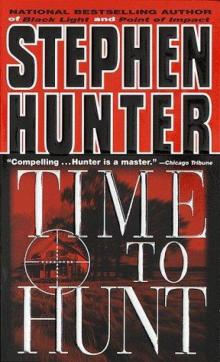 Time to Hunt bls-1
Time to Hunt bls-1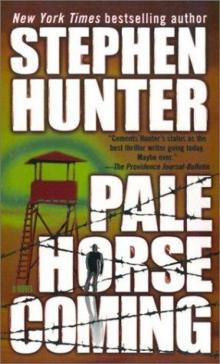 Pale Horse Coming es-2
Pale Horse Coming es-2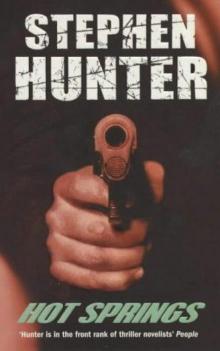 Hot Springs es-1
Hot Springs es-1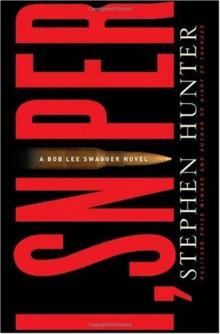 I, Sniper: A Bob Lee Swagger Novel
I, Sniper: A Bob Lee Swagger Novel